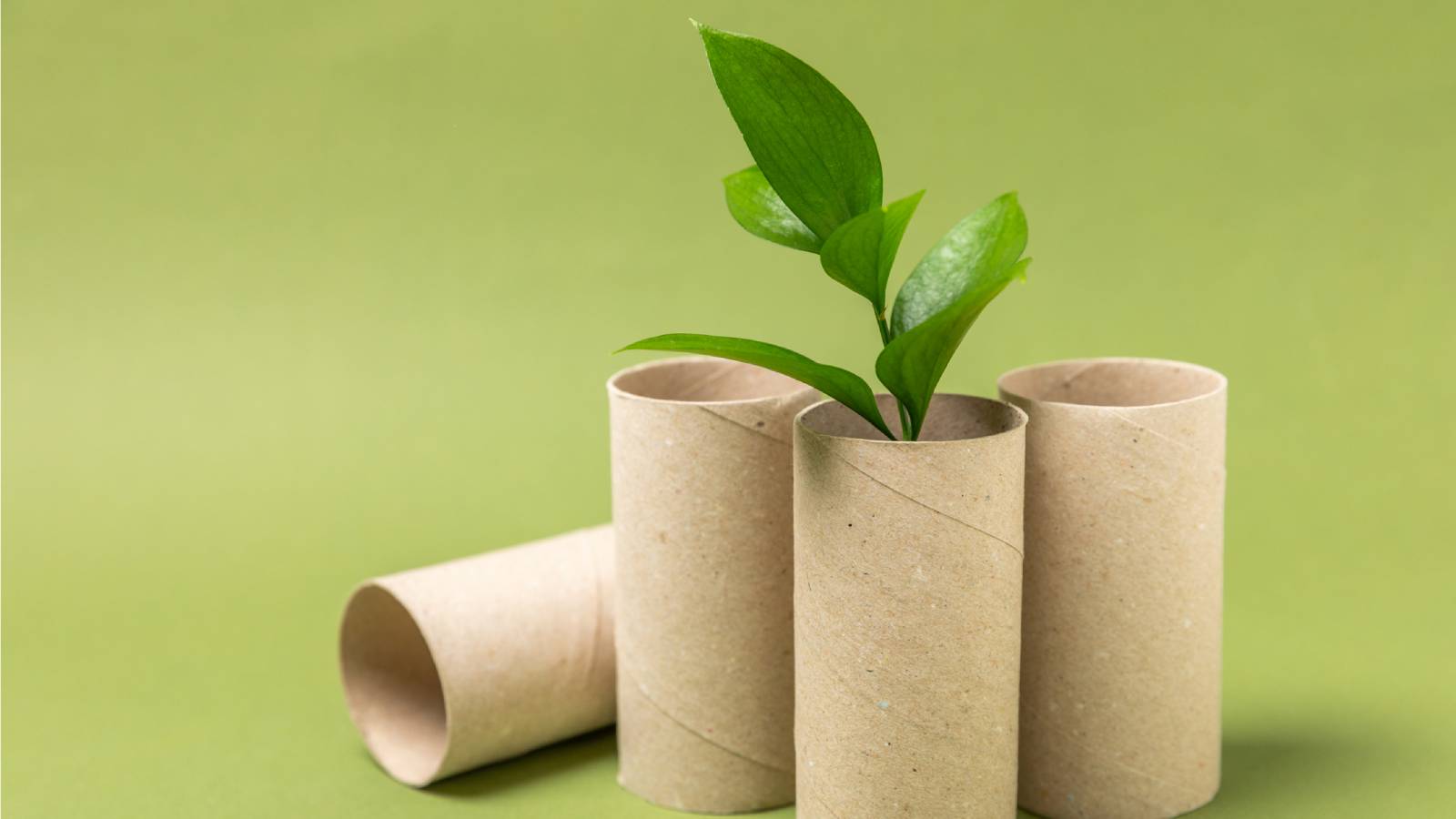DIY Plant Collar Ideas: Making A Plant Collar For Pests

Every gardener has experienced some sort of problem regarding transplanting young seedlings. Weather can wreak havoc on tender plants, as do pests. While we can’t do much about weather conditions, we can protect our seedlings from pests by using a plant collar for pests. What is a plant collar? Read on to learn more.
What is a Plant Collar?
Cutworms and cabbage root maggots feed on tender stems of plants, effectively severing them and causing plant death. A plant collar is a simple tube placed around the base of the plant to prevent these pesky pests from feeding on the plant.
A DIY plant collar is a simple structure that can be made easily from recycled items found around the home.
How to Make a Plant Collar
The good news is that a homemade plant collar is easy to make. A DIY plant collar may be made out of several materials, often recycled ones. The easiest way to make your own plant collar is by using empty toilet paper tubes or paper towel rolls.
Other materials that may be used to create a DIY plant collar for pests are aluminum foil, paper cups, recycled cardboard, or even milk jugs and tin cans.
There are two benefits of using tubes from toilet paper or paper towel rolls. One is that you don’t need to form and secure a circle, as it’s already been done for you. Two, these rolls will automatically begin to degrade into the soil in a few weeks, enough time for the plant to mature and the stems to harden enough that the pests can’t eat through it.
Basically, the idea is to form a circle out of your chosen material that can be buried one to two inches (2.5-5 cm.) beneath the soil and stand up around the stem of the plant two to four inches (5-10 cm.).
Gardening tips, videos, info and more delivered right to your inbox!
Sign up for the Gardening Know How newsletter today and receive a free copy of our e-book "How to Grow Delicious Tomatoes".
If using toilet paper or paper towel rolls, use sharp scissors to cut the tubes to length. If using cans, remove the bottom of the can to form an open cylinder. Proceed by gently lowering the tube over the young seedlings and then burying it into the soil.
Simple DIY plant collars can help protect tender and young Brassicas, tomatoes, and peppers as well as other vegetable crops susceptible to these nibblers, giving you a better chance at a bountiful crop.

Amy Grant has been gardening for 30 years and writing for 15. A professional chef and caterer, Amy's area of expertise is culinary gardening.
-
 Moody Blooms For Spring: 8 Types Of Black Flowers To Add Drama To Spring Displays
Moody Blooms For Spring: 8 Types Of Black Flowers To Add Drama To Spring DisplaysFrom midnight burgundies to inky violets, several types of black flowers can enrich and embolden a spring display. Try these brooding bloomers for a moody garden
By Tonya Barnett
-
 Can Snake Plants Live Outside? Everything You Need To Know For Snake Plants Al Fresco
Can Snake Plants Live Outside? Everything You Need To Know For Snake Plants Al FrescoSnake plants can live outside given the right conditions, but be careful that they don't take over! Learn the best way to use snake plants in your landscape.
By Mary Ellen Ellis